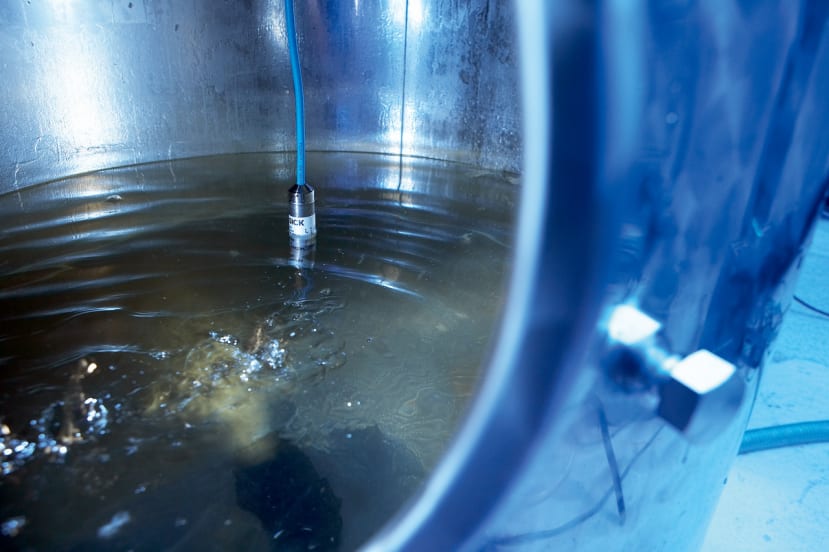Under pressure to find a Level monitoring solution ? Hydrostatics could be the answer
Follow articleHow do you feel about this article? Help us to provide better content for you.
Thank you! Your feedback has been received.
There was a problem submitting your feedback, please try again later.
What do you think of this article?
There are a lot of different level measurement technologies to choose from and sometimes it is difficult to decide which technology to use in an application. Hydrostatics is a level measurement technique widely employed in the industry. But what is it and what are the benefits and potential pitfalls with the technology?
What is hydrostatic level measurement?
Hydrostatic level measurement is the use of hydrostatic pressure to infer a level measurement. The "head" of liquid applies a pressure which increases in a linear relationship to the amount of "head". So a pressure sensor located at the base of a vessel can measure the hydrostatic pressure and in the right circumstances accurately infer the "head" of liquid above the sensor and hence the level in the vessel.
What are the benefits of hydrostatic level measurement?
Hydrostatic level measurement can be a very cost-effective and easy to implement level measurement technology. It is largely unaffected by surface properties of a liquid which may have a detrimental effect on other level measurement techniques. e.g. foam, turbulence etc. Hydrostatic level measurement can be realised using submersible level sensors (sometimes referred to as a plumb bob) which can be lowered from the top of the vessel or a standard pressure sensor can be mounted into a port towards or at the base of the vessel.
Examples of submersible pressure sensors
What to consider when thinking about hydrostatic level measurement?
The actual pressure applied by a head of liquid is proportional to the liquid head in metres, the force of gravity and the density of the liquid. As the force of gravity can be considered more or less constant on earth, the variable we need to consider is the density of liquid. If the density of the liquid is likely to change significantly during the process then hydrostatics might not be for you. The main reasons for a change in density is a change of liquid you are measuring in the vessel or big temperature changes. If you expect big changes in temperature it is worth considering what effect this will have on the liquid you plan to measure. Of course, some will say that all of these things can be compensated for and that is true. Algorithms can be created to compensate for temperature changes if the temperature is measured and the impact on density changes is known for the particular liquid in question. It is also possible to change the relationship of pressure measurement to the level indication you get from your system when changing liquids too. It just adds a little more complexity into the implementation of the solution.
Rule of thumb for hydrostatic level measurement
A commonly accepted rule of thumb for hydrostatic level measurement is that a 1m head of water applies a pressure of approx. 0.1 Bar. This relationship is widely used to apply hydrostatic level sensors. For example, using this relationship, a vessel 10m in height storing water can be monitored using a 1 Bar sensor located or submerged to the base of the vessel. Not withstanding, there will be some change in the level indication based on density variations caused by temperature changes and any additives in the water. However, often these are smaller than the required accuracy. Note: The density of water changes by about 1% for a temperature change from 10°C to 50°C which would mean a 1% change in the level indication caused by the density change in the water if not compensated for. In many applications, the temperature does not vary that much and even if it does, this amount of change is often considered acceptable.
Oil has a lower density than water so would apply around 5-20% less hydrostatic pressure. Check the specific gravity (SG) of the media for a better gauge on how different to water your media is. SG of Water = 1 @ 4°C. For a liquid with an SG of 0.9 the rule of thumb would be 1m head of that liquid applies a pressure of approx. 0.09 Bar.
What other things to consider?
Hydrostatic level sensors are normally gauge pressure sensors meaning that they measure pressure with respect to normal atmospheric conditions. If the vessel is vented then the air inside of the vessel will be at the same pressure as the atmosphere, which is what the hydrostatic level sensor expects. If the vessel is pressurised or under vacuum, other level sensing techniques would be worth considering instead of hydrostatics. An example would be guided radar technology.
Another consideration is suspended solids. Submersible pressure sensors like the ones detailed above have a large sensing membrane, under the plastic protective cover. These large membranes are designed to withstand build up of particles and blocking of the pressure port. Similarly, pressure sensors used for hydrostatic level measurement which are inserted into ports at the foot of the vessel often use flush membranes to remove the risk of blockage.
Example of hydrostatic sensors for mounting into a port at the base of the vessel
Finally, if the liquid is likely to solidify over time this can have a detrimental impact on the reliability of hydrostatic level measurement. If this is the case in your application you should question whether this is the right technology for you.
Summary
In the right application, hydrostatic level measurement can be an extremely reliable and cost-effective solution for a range of liquid level measurements. It is best suited for use in vented vessels where the liquid is unlikely to solidify over time. This accounts for the majority of level applications which explains why it is in common use in a wide range of industries.


